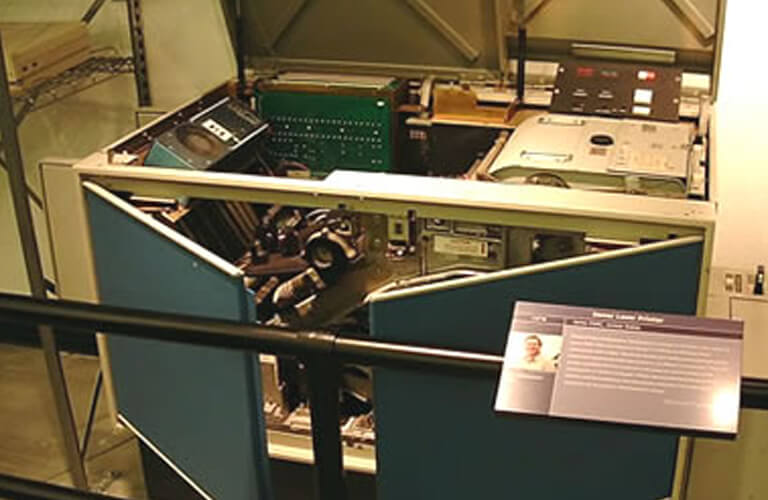5 Practical Principles for High-Impact Innovation
“Innovation is what distinguishes a leader from a follower”
With this famous maxim, Steve Jobs summarised a fundamental and increasingly relevant concept. For businesses – regardless of their size, industry, and technology utilised – the ability to innovate is becoming increasingly fundamental.
Innovation is essential not only to prosper but also to ensure whether a business survives.
Starting from this now firmly established and widely shared truth we will try to reflect upon:
How many truly high-impact innovations have you launched in recent years?
I’m not talking about incremental improvements to existing products or solutions. I’m not talking about changes made to successful products or services by responding to competitors or by meeting customers’ requests.
I'm talking about innovations that differentiate your products from your competitors', innovations that are so loved by customers that you are rewarded with consistently growing sales.
Is the answer “None”? Or “not many”? Then you will most likely find yourself in at least one of the following situations:
- You do not have enough resources to invest
- You do not want to invest resources in a venture where the rate of return is highly uncertain
- Your staff are not sufficiently innovative
- You do not have enough time to dedicate to innovation
- You have some good ideas, but your competitors are better at “selling them”
The truly worrying thing is that focusing on these situations does not allow you to recognise and concentrate on resolving the fundamental problem at the core of this inability to innovate.
The common denominator problem among companies that strive to innovate but do not obtain tangible results is the lack of a system of innovation!
This is illustrated by the story of Xerox and the laser printer, created by optical engineer Gary Starkweather. Starkweather had a concept that was revolutionary at the time: he believed he could design a printer capable of printing anything by translating any font or image into a digital format and sending it directly to the printer. A common idea by today’s standards, but completely revolutionary when it was conceived. Starkweather’s boss, however, thought that it was pie in the sky idea and suggested that he find something else to do. Gary, however, firmly believed that his idea was viable. Whenever he had time in between his other activities, he would work on it in secret. This situation soon became unsustainable and in 1971, Starkweather successfully asked to be transferred to Xerox Parc, the nascent division of the Xerox Corporation dedicated to innovation. Gary and his team, even in the midst of many difficulties, were able to successfully develop and commercialise the laser printer. In 1981, they introduced the Star 8010 personal printer with a $17,000 price tag. This obviously did not favour its mass adoption. Only in 1984, with the advent of HP’s first LaserJet, did the digital printer become widely adopted by the public.


Despite the presence of an extremely motivated and persistent “creative genius” in Starkweather, and in spite of a huge investment in innovation (Xerox Parc was a huge research lab with the best technology and the best minds of the time) Xerox failed to take full advantage of its own innovation. In fact, the market for laser printers has been dominated by HP ever since. Unfortunately for Xerox, this was not an isolated incident. The mouse and the graphical interfaces as we know them today, for example, were invented at Xerox Parc. However, it was Apple that benefited from them by revolutionising the computer!
At that time, Xerox’s innovation system was not yet fully developed. Unsurprisingly, as a result of these events, the company’s innovation model underwent a profound redesign and Xerox strived to create a system that would allow the company to benefit from its efforts and investments.
Creating an Innovation System
But what does a system of innovation need in order to be effective? What needs to be put in place?
As Lenovys, and even prior to that as professionals in our fields, we’ve spent years trying to discover what has allowed some companies – such as Apple, Toyota, Artemide, Alessi, among others – to achieve above-average results in the field of innovation. This has allowed us to distinguish between those things that have worked (and continue to work) from those that have not; (In this regard knowing the false myths of innovation?).
But that in itself would not be enough.
Our support role for companies in many diverse sectors has allowed us to test and experiment on recognised best practices in the field, adapting them to the Italian context of SMEs and companies that lack the financial means or developed venture capital systems present in other countries.
Using this research and experience, we have created our Impact Innovation system, based on five principles. The ultimate goal is to support and accelerate a company on its journey to creating an innovation system. To help you start to move in the right direction, we have selected five practical principles (one for each element of the Impact Innovation system) that can be immediately applied and will allow you to start working on creating your own innovation system to achieve the desired results!
Here are the five basic principles from which to start.
# 1. Work on the impact proposal not on the product.
Businesses, entrepreneurs and people engaged in R&D are usually in love with their products. Even when they want to innovate, they are always trying to answer the question “how can I improve my product?” It is a pity that this question does not lead to appreciable results when it comes to high-impact innovation. In fact, customers do not care at all about our products!
Companies that continuously innovate successfully start from a completely different premise. The question consistently driving all of their innovation efforts is: “How can I offer my clients a product that satisfies functional, emotional or status requirements in a way that is superior to our competitors?”
Steve Jobs was a master of this. The iPod was not the first MP3 player, but it was the first product to offer a whole new impact to its customers thanks to its integrated product (iPod) and service (iTunes): the iPod offered the possibility to personalise the way you enjoy music on the move in a “cool” way (through the creation of playlists that could be synchronised at the touch of a button through iTunes).
#2. “Complete” your innovation.
Having defined the proposal that I want to make to customers, that is to say “what I want them to get from the proposed innovation”, I can then progress to planning the solution. The most common mistake I see in companies is that they focus on the product and, in the best of cases, on the ancillary products/services associated with it.
In truth, the spectrum of elements to consider is much broader and much richer in opportunities. In fact, I could innovate the supply chain of support I need to ensure the constant availability of my solution over time, or to rethink the customer purchasing experience in order to make it more integrated and consistent. The more innovation elements introduced in these areas, the more difficulty the competitors will have in copying them, and therefore the greater our revenues will be.
Taking the example of the iPod, Apple designed not only the product/service system (player + iTunes), but also the supply chain. For example, consider the revolution linked to the possibility of purchasing only a single song at just $ 0.99 instead of the entire album, which was made possible through partnerships with major record companies. It is a clear example of a supply chain design coherent with the impact proposition chosen by Apple. Also look at innovation from the point of view of customer experience, linked to the Apple store. Or think of McDonald’s which, without offering a product of exceptional quality, has innovated greatly in the supply chain area (standardised and visible process, evolved partnerships with suppliers for real-time supply, store management as “affiliates”) and from the point of view of customer experience (brand management, designed and coordinated creation of spaces within retail outlets).
The possible tactics for complete innovation are different and being aware of them confers a huge competitive edge.
#3. Experiment from the outset, even when you think you are not yet ready
In order to generate high-impact innovations without wasting time and unnecessary energy, you need to quickly understand whether the impact proposal and the configuration chosen for our solution actually add value to the customer. However, companies usually use efforts and energies to develop the most complete solutions that can be tested on a large scale so that they have statistically significant results. Or spend time and resources in long debates on what would be best to develop.
These processes have limits and weaknesses that are no longer acceptable in today’s more dynamic and fast-paced competitive scenario. In order to quickly learn the real needs of the customer, it is necessary to proceed with a strongly experimental approach and develop the so-called MVP (Minimal Viable Product).
The MVP is an extremely simplified version of the solution you want to develop and contains only the features required to gather feedback from a small group of customers. Quick test and learning cycles allow you to quickly develop your solution without wasting energy and effort on developing full functionality that adds no value to your customers.
A leading innovative company like Airbnb is a master in the use of experimentation to quickly fine tune its solution. Airbnb was created almost by accident by Brian Chesky, Joe Gebbia and Nathan Blecharczyk who in 2007 decided to increase their revenue by renting out a room in their San Francisco apartment. At the time, a huge influx of visitors was expected to arrive for an important design conference in the city. The three friends quickly created a website to publicise their initiative. In other words, they quickly created a Minimal Viable Product. They realised, through testing it directly in the field, that this initiative was of interest not only to young people and students, but also to older people. By continuously testing and improving their solution, thanks to successive versions of MVP, Airbnb has become one of the largest accommodation providers in the world today.
#4. Say no to 1,000 things
Even the most brilliant and innovative impact proposals may fail to generate the expected results if the company is unable to realise them and quickly bring them to market. With this point of view and the desire to quickly realise proposals, companies launch several initiatives or projects simultaneously with the belief that this will reduce development times.
Reality unfortunately shows the opposite to be true. The more projects simultaneously managed by the same resources actually serve to slow each other down. In this regard, Steve Jobs said that innovation comes from “saying no to 1,000 things“. In fact, when Jobs returned to Apple’s leadership he dramatically reduced the number of products and projects the company was working on. For example, shortly after his return to the firm he closed the Newton project, a forerunner of the modern tablet, just five years after its launch. The QuikTake project met a similar fate; the Apple branded camera remained on the market for only three years. It is good to point out that it is not a question of how good an idea is. Both the tablet and the camera have proven over time to be winning proposals. But at that time, Apple decided to focus on a single innovation project: the launch of the iMac, the product that symbolised Apple’s rebirth.
In other words, innovation is the result of hard work focused in one direction. Spreading energy and effort in many different directions never leads to excellence, but rather leads to doing things superficially and over a longer time.
#5. You do not have to do everything by yourself
When it comes to innovation, many companies think about keeping their business secret, not letting those outside know what they are focusing on. Although in some cases the need for confidentiality is desirable, many cases can be more open with enormous benefits in terms of time-saving, resources and increased levels of innovation.
In today’s global and interconnected world, the ability to make the most of the Open paradigms (open innovation, crowdsourcing) can allow you to reap enormous benefits. P&G is an excellent example of how you can stimulate and support your innovative activities by means of open innovation. In 2000, the CEO of P&G AG Lafley set an extremely ambitious target. P&G had to get 50% of its innovations from outside the company. This did not mean replacing the abilities of the approximately 7,500 researchers who worked in the company at that time. It meant making them work in different and more productive ways, exploiting the knowledge and innovative capabilities around the globe. This is how P&G created its Connect & Develop management system.
Bill Joy, co-founder of Sun Microsystem, said “No matter who you are, most of the smartest people work for someone else.” In other words, no matter how large, effective and efficient a company can be, there will always be brilliant and better trained people elsewhere. The real challenge is to build a system, as P&G did, to leverage and take advantage of these widespread skills.
Working on these five points is fundamental to creating a true innovation system that can continually generate high-impact innovations. High-impact innovation is possible even in Italy, by a small company, and in sectors traditionally considered to be less innovative. For example, Cromology Italia – with whom we have had the pleasure of collaborating – has demonstrated how, with the right innovation system, even a traditional company in a stable sector, such as the paint sector, can generate enormous innovation (see the Interview with AD Cromology Italia).
And how can you use these ideas to improve your innovation system?
Article by:

GABRIELE COLOMBO
Principal Lenovys
He has been responsible for defining, planning and implementing research and consulting programs related to the world of innovation and continuous improvement; He also brings this experience to the role of project management and innovation manager at the School of Management of the Politecnico di Milano.


